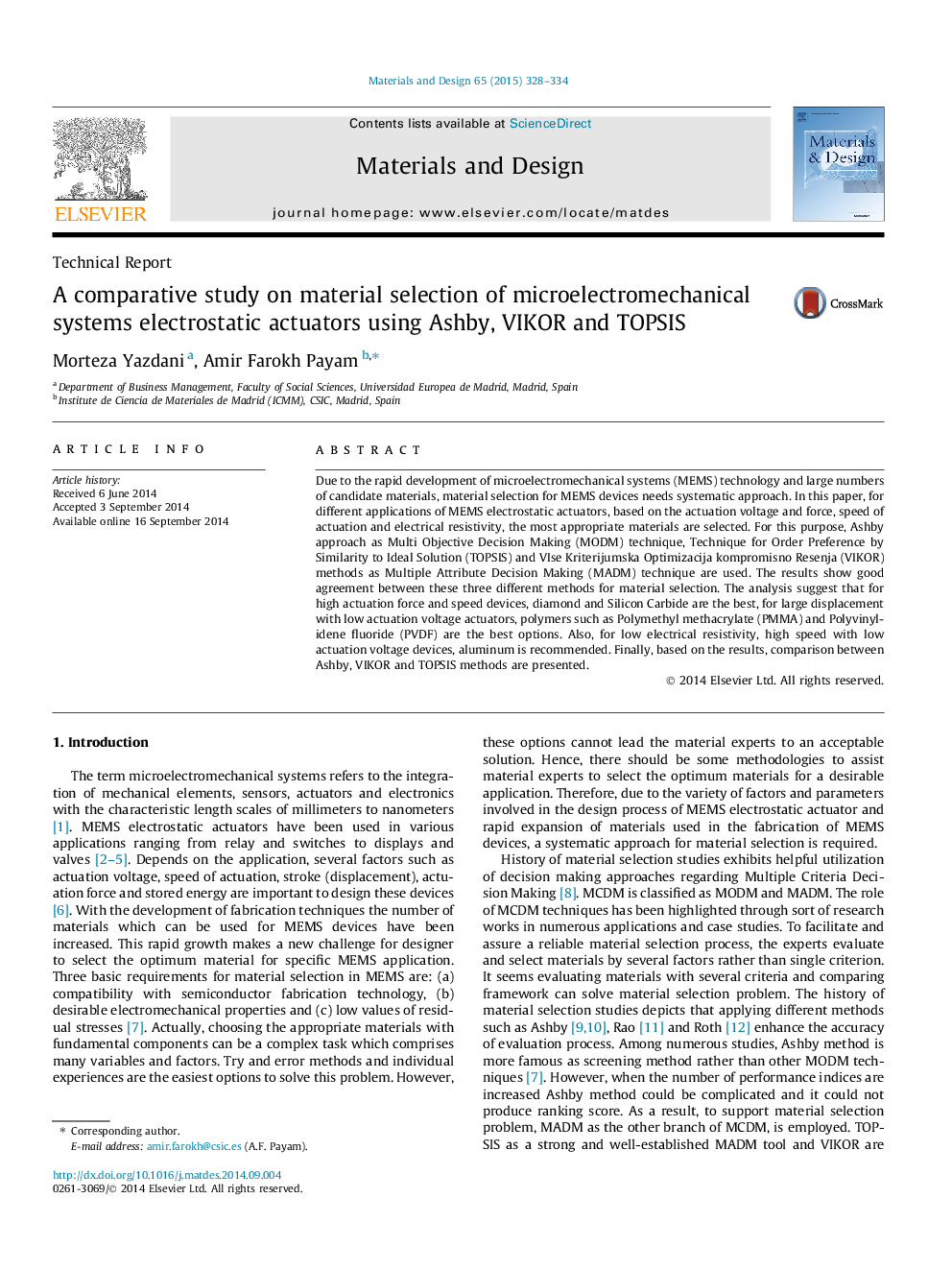| Article ID | Journal | Published Year | Pages | File Type |
|---|---|---|---|---|
| 828812 | Materials & Design (1980-2015) | 2015 | 7 Pages |
•Best materials for MEMS electrostatic actuator are selected.•Three different MEMS electrostatic actuators are considered.•Actuation voltage and speed, stroke and electrical resistivity are critical factors.•VIKOR, TOPSIS and Ashby methods are applied for material selection.
Due to the rapid development of microelectromechanical systems (MEMS) technology and large numbers of candidate materials, material selection for MEMS devices needs systematic approach. In this paper, for different applications of MEMS electrostatic actuators, based on the actuation voltage and force, speed of actuation and electrical resistivity, the most appropriate materials are selected. For this purpose, Ashby approach as Multi Objective Decision Making (MODM) technique, Technique for Order Preference by Similarity to Ideal Solution (TOPSIS) and VIse Kriterijumska Optimizacija kompromisno Resenja (VIKOR) methods as Multiple Attribute Decision Making (MADM) technique are used. The results show good agreement between these three different methods for material selection. The analysis suggest that for high actuation force and speed devices, diamond and Silicon Carbide are the best, for large displacement with low actuation voltage actuators, polymers such as Polymethyl methacrylate (PMMA) and Polyvinylidene fluoride (PVDF) are the best options. Also, for low electrical resistivity, high speed with low actuation voltage devices, aluminum is recommended. Finally, based on the results, comparison between Ashby, VIKOR and TOPSIS methods are presented.
